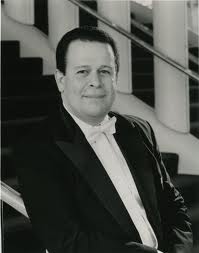|
Symphony
MAHLERTHON AT SRS WEILL HALL CONCERT
by Peter Lert
Sunday, December 8, 2024
Chamber
UNIQUE TRIO FOR THE ROMANTIC ERA IN SONG
by Pamela Hicks Gailey
Saturday, November 16, 2024
Chamber
JASPER'S LUSH PERFORMANCES OF STILL, DVORAK AND FUNG QUARTETS
by Abby Wasserman
Sunday, November 10, 2024
Symphony
A SHOUT AND SONIC WARHORSES AT NOVEMBER'S SRS CONCERT
by Peter Lert
Saturday, November 9, 2024
Choral and Vocal
ECLECTIC WORKS IN CANTIAMO SONOMA'S SEASON OPENING CONCERT
by Pamela Hicks Gailey
Sunday, October 27, 2024
Symphony
FRANKENSTEIN THRILLS IN UNIQUE SO CO PHIL CONCERT IN JACKSON THEATER
by Peter Lert
Saturday, October 26, 2024
Choral and Vocal
BAROQUE EXTRAVAGANZA AT AMERICAN BACH MARIN CONCERT
by Abby Wasserman
Friday, October 25, 2024
Recital
LARGE AUDIENCE HEARS AX IN WEILL PIANO RECITAL
by Terry McNeill
Thursday, October 24, 2024
Symphony
SRS' NEW SEASON OPENS WITH BEETHOVEN AND COPLAND IN WEILL
by Terry McNeill
Saturday, October 19, 2024
Chamber
TWO CHAMBER MUSIC WORKS AT MARIN'S MT. TAM CHURCH
by Abby Wasserman
Sunday, October 13, 2024
|
 |
 Violinist/Violist Victor Romasevich |
PUNGENT GALLIC WORKS IN WEILL CHAMBER MUSIC CONCERT
by Terry McNeill
Sunday, January 26, 2014
Sonoma State’s resident Trio Navarro presented an all-French program Jan. 26 but somehow the German Baroque composer Telemann’s Quartet in E Minor managed to open the concert before 150 in Weill Hall.
Featuring a flute, violin, cello and the University’s cute green harpsichord, the Telemann work from 1733 was a perky beginning, though the modern flute seemed novel after recently hearing American Bach Soloists Marin Concert that had lots of the mellower Baroque flute sound. Each of the six movements was alternatively jolly and stately, the ensemble perfect even in past passages. In places the melodic lines of the flute (Julie McKenzie), cello (Jill Rachuy Brindel) and violin (Victor Romasevich) descended and ascended in unison, only to gracefully soar apart. Trio founder Marilyn Thompson was the harpsichordist. The performance was a highlight of the evening.
Soprano Carol Menke joined Ms. Brindel and McKenzie and pianist Ms. Thompson for Ravel’s intriguing song cycle Chansons Madécasses from 1926. The performance was a sea change from the tame Telemann, as the flute often played as a drone, the cello reacquired vibrato and Ms. Thompson’s tone was always colorful and full. Ms. Menke French diction was as convincing as her command of the score’s many vocal outbursts. The quartet perfectly managed the manifold moods of this intense work: a mournful dirge, an oriental flute cadence, a piccolo beginning and mystery in the final Il est doux de se coucher part. At time Ms. Menke’s voice was covered by the other three instruments, but just as often she called forth a ringing forte note or phrase that had considerable power.
Duruflé’s lovely Prelude, Recitative and Variations (flute, viola, piano) completed the first half, another jump in texture and sound. Known in America mostly for his Requiem, the composer in less than 12 minutes wrote a beguiling piece that began enigmatically with a piano introduction and a short theme given to the violin. However, the sun came out with Ms. McKenzie’s warm and resplendent playing, the long phrases sailing into a high register and contrasting Mr. Romasevich’s rich low register viola notes. The piece was reminiscent of Ravel but more of Faure, though Ms. Thompson’s piano playing was more forceful than one usually encounters in Faure.
A short and bucolic Une flûte invisible from St. Saëns opened the second half. It was lovely lullaby for soprano, flute and piano, with echoes of St. Saëns’ late clarinet sonata. Ms. Menke sang it very well, as she did in the idiosyncratic Poulenc song cycle for soprano and piano, Fiançailles Pour Rire. Here her energetic singing captured the six-part cycle’s vacillating sections, sometimes flighty, sometimes soft, sometimes a hot-house torch song familiar to Edith Piaf fans. The piano part provided subtle harmonic endings to the last three sections.
With Dukas, Ravel must have the highest percentage of masterpieces among modern French composers (maybe all composers) and his A minor Trio that closed the program is deservedly a classic. The Navarro adopted a brisk first movement tempo with Mr. Ramasevich’s burly resonance bringing to this trio a different sound than has been heard with perennial Navarro violinist Roy Malan. And the Ravel calls for an intense reading, at times in the Animé finale there was almost chaotic music making. In the lovely but sad Passacaille Ms. Brindel and Mr. Romasevich often played close thematic lines with Ms. Thompson’s piano deftly finishing phrases. The final movement was played with zeal and potent driving rhythms, built around loud piano chords over quick violin trills. It was a decisive performance, not for the timid.
The addition of Mr. Romasevich and sterling guest musicians have continued the Navarro’s artistry, guided for so many years by Roy Malan. It is our area’s preeminent chamber music ensemble.
|
